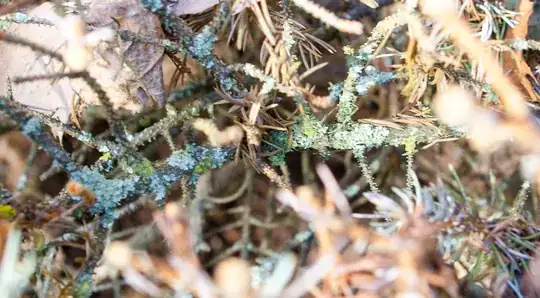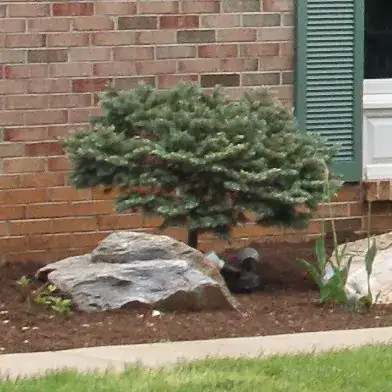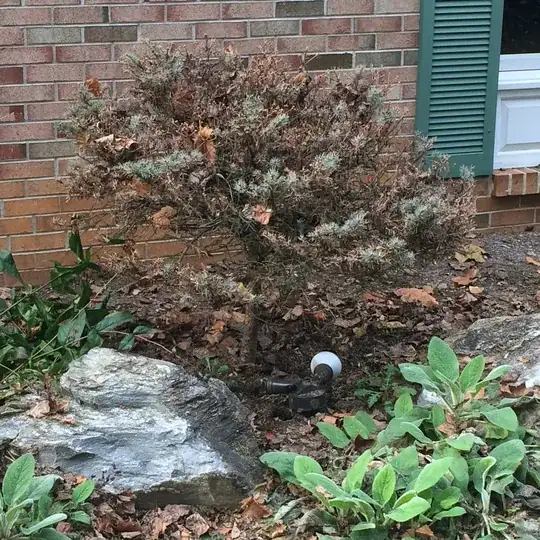This ornamental conifer, which looks like some sort of blue spruce, has lived in this spot since at least spring of 2014, when it looked like this:
I live in SE Pennsylvania, and it has appeared healthy until a few weeks ago, when I noticed a majority of its needles had died. We haven't had extraordinary weather recently. Is the plant itself dying? Is any care indicated?
(The only thing that has changed in its environment since it was originally planted is the addition of lamb's ear to the bed last year, which the picture shows is growing a few feet away.)
Per @stormy's request: There has been no fertilization since a dusting of Preen in the Spring. I pulled soil back from the trunk until I was scraping dense clay and took these two photos:
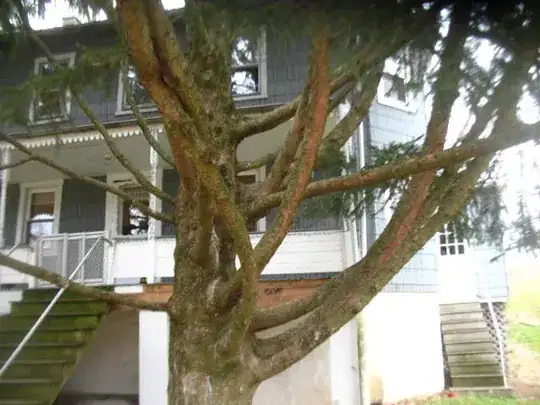
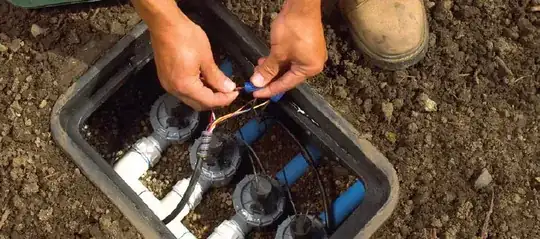
Here is a macro photo of a cut stem and dead needles:
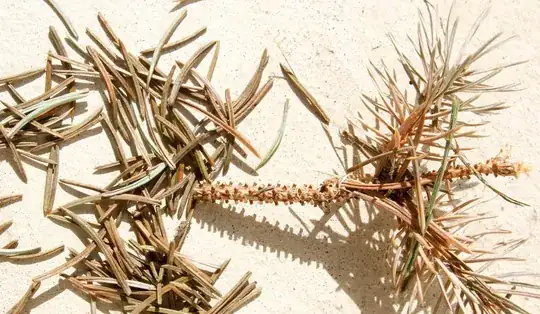
Here is a close-up of heavy lichen coverage on the branches, although I think that had developed that while the tree was still healthy:
